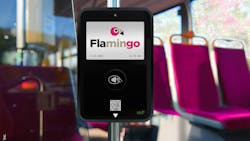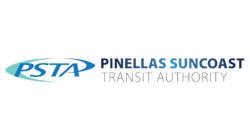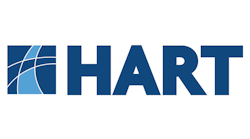How agencies are getting creative with contactless payments
Today, transit agencies are looking for new ways to increase ridership, and three agencies are setting the pace by how they approach contactless fare payments. From Tampa, Fla., where open payments improve equity for unbanked riders, to Providence, R.I., where an equity-based free-fare zone is implemented, to Spokane, Wash., where a contactless mobile and smart card system is winning the hearts of riders and receiving awards. Here are their stories.
Florida’s first in open payments
In Tampa, Hillsborough Transit Authority (HART), Pinellas Suncoast Transit Authority (PSTA) and Hernando County (The Bus) are pioneering the way people travel throughout the region. Being the first regional system in Florida to implement open loop contactless payments using Visa’s global urban mobility framework, they have opened the door for riders to pay their fares using any digital payment – whether it be a contactless credit, debit or prepaid card, a wearable, the Flamingo Fares card or mobile app.
Cash-based riders have not historically been given many options when it comes to paying by contactless non-cash fare media. However, with Flamingo and open loop contactless payments, any rider can now use payment options that work both on and off the bus—making paying for transit as easy as paying for other everyday essentials. Riders can now tap to pay for transit with their contactless credit or debit card, and riders who may otherwise have paid in cash can use their own contactless prepaid card.
As an added benefit, the agencies employ best-price fares across the region. This means once a rider meets the cost of a daily pass, they will ride free for the rest of that day. For the thousands of annual tourists who visit the Tampa Bay region, this means less worry about how much a ticket might cost and enhanced mobility when traveling around the area.
“Contactless payments will make navigating our region much simpler for not only our existing riders, but for the thousands of tourists who visit all that Pinellas County and the Tampa Bay region has to offer,” said Brad Miller, CEO of PSTA. “Customers can still pay with their Flamingo Fares card, but customers now have more options to use public transportation and reduce their carbon footprint.”
Rhode Island’s geofenced free fare pilot
In Providence, the Rhode Island Public Transportation Authority (RIPTA) is taking a different approach to contactless fares with a geofenced free-fare zone. Officials wanted to learn how they might provide more valuable services to riders and, in the process, increase ridership. Through a grant from Accelerating Innovative Mobility (AIM), the agency built a geographical free fare zone around Central Falls using RIPTA’s account-based fare system from INIT.
After setting up a no-tariff parameter within the state’s most densely populated city, its riders were empowered to tap their contactless Wave card or mobile app to travel at no cost to them.
RIPTA's pilot program holds promise in helping them launch targeted marketing partnerships that could increase use of public transportation. The technology could allow entities such as universities, business associations or social service agencies to sponsor ridership in specific, limited areas.
Scott Avedisian, chief executive officer, RIPTA said, "This pilot program allows us to collect the statistical information we need to help us make informed decisions about future innovative services that are beneficial to our passengers.”
Washington’s award-winning system
In Spokane, Wash., connecting people to opportunity has always been a priority for Spokane Transit Authority (STA). Serving a seven-city region, STA’s Connect fare system encompasses both physical cards and mobile payments within the eConnect mobile app. The new fare structure was launched in October 2022 with promising results. Within the first four months, rider adoption rate reached 48 percent.
Riders can now manage their individual account by registering online. Using the website and mobile app, they can easily add funds, trigger an autoload option, view ride history and check their current balance. The Connect mobile app additionally gives riders the ability to create a virtual card (eConnect) and use it to pay their fare with a barcode.
Expansion of the new fare system to include open payments is planned for 2023, but already Connect is winning awards. The Spokane/Coeur d’Alene chapter of WTS International (Advancing Women in Transportation) awarded the agency “2022 Project of the Year” for connecting riders through its innovative fare system and for an outstanding launch via an all-female project team.
E. Susan Meyer, STA’s CEO explains, “With INIT as our technology partner, we have implemented an innovative solution to not only enhance the customer experience for existing riders, but also to attract new ones.”
Summary
These three agencies are setting the standard for how flexible and creative transit systems can be with account-based, contactless fare systems. The convenience, personalization and flexibility resonate with riders, which in turn provides a more positive experience when utilizing public transportation.
-------------
Ann Derby is director of marketing and events for INIT, Inc.





